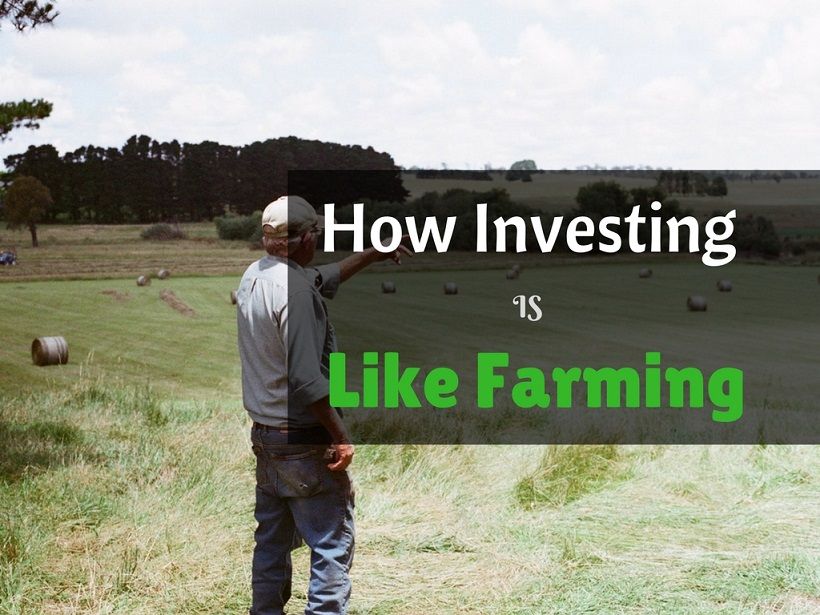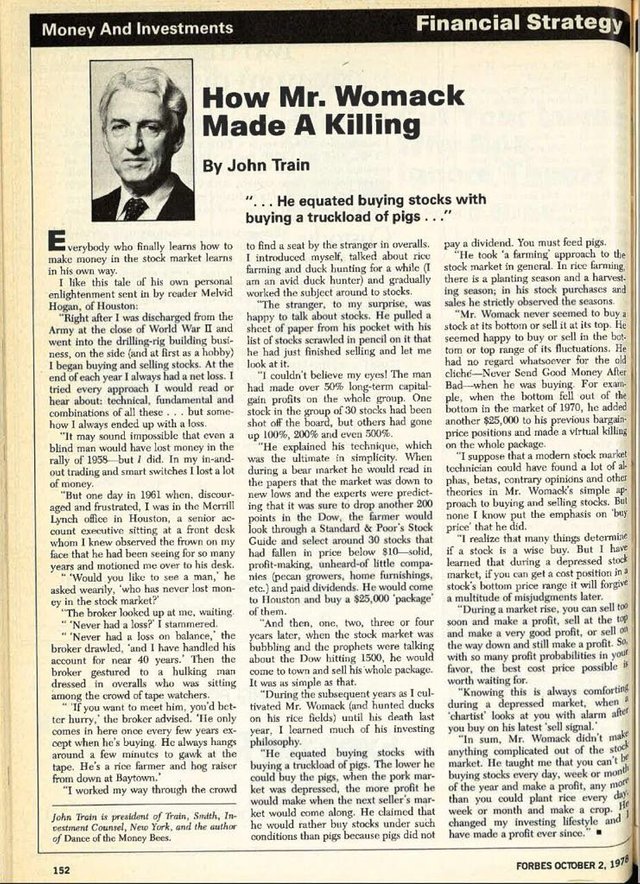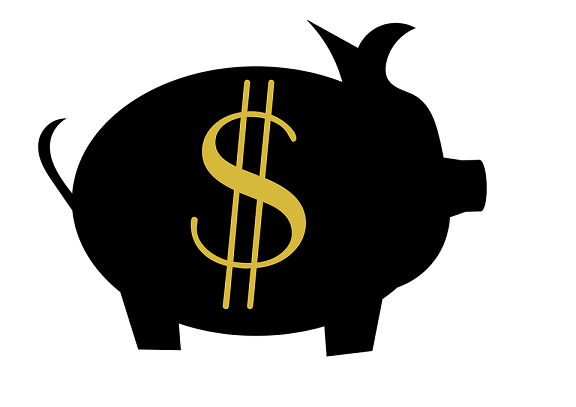How Investing Is Like Farming

Today I want to share with you a great story that I just finished reading.
It was first published in Forbes magazine on October 2, 1978 under the title “How Mr. Womack Made A Killing” by John Train.
I do wish to note that the story was actually sent in by one of his readers, Melvid Hogan, and Mr. Train merely shared it with the world. Normally this whole tale is attributed to Mr. Train and I just want to give credit to Mr. Hogan where it is due. (Plus, I am like the Mr. Train of Steemit, so there’s that. :D)
It seems that we are in the midst of a “get rich quick” mentality today. From the rapid rise of crypto these past few months to Ponzi schemes, like Bitconnect, finally collapsing only to have others (cough, Profitable Morrows, cough) fight to take its place – much of the population is now firmly under the assumption that getting rich quickly is easy. Until it isn’t.
Getting rich quickly often leads to getting broke quickly.
I study similar events in our past and can often see the connections between two similar events that happened decades or centuries apart.
Some people might say that the world this investor lived in is so far in the past that what is shared in the story isn’t relevant anymore. I say that human behavior hasn’t changed and by learning from the past you can avoid making the same mistakes.
Yes, sometimes you have to adjust the lessons of history to fit in today’s world, but the nugget of wisdom is still there for the taking.
So read the story and see if you can learn something.
(I wrote it all out below the image)

How Mr. Womack Made A Killing
“Right After I was discharged from the Army at the close of World War II and went into the drilling-rig building business, on the side (and at first as a hobby) I began buying and selling stocks. At the end of each year I always had a net loss. I tried every approach I would read or hear about: technical, fundamental and combinations of all these… but somehow I always ended up with a loss.
“It may sound impossible that even a blind man would have lost money in the rally of 1958 – but I did. In my in-and-out trading and smart switches I lost a lot of money.
“But one day in 1961 when, discouraged and frustrated, I was in the Merrill-Lynch office in Houston, a senior account executive sitting at a front desk whom I knew observed the frown on my face that he had been seeing for so many years and motioned me over to his desk.
“ ‘Would you like to see a man,’ he asked wearily, ‘who has never lost money in the stock market?’
The broker looked up at me, waiting.
“ ‘Never had a loss?’ I stammered.
“ ‘Never had a loss on balance,’ the broker drawled, ‘and I have handled his account for near 40 years.’ Then the broker gestured to a hulking man dressed in overalls who was sitting among the crowd of tape watchers.
“ ‘ If you want to meet him, you’d better hurry,’ the broker advised. ‘He only comes in here once every few years except when he’s buying. He always hangs around a few minutes to gawk at the tape. He’s a rice farmer and hog raiser from down at Baytown.’
“I worked my way through the crowd to find a seat by the stranger in overalls. I introduced myself, talked about rice farming and duck hunting for a while (I am an avid duck hunter) and gradually worked the subject around to stocks.
“The stranger, to my surprise, was happy to talk about stocks. He pulled a sheet of paper from his pocket with his list of stocks scrawled in pencil on it that he had just finished selling and let me look at it.
“I couldn’t believe my eyes! The man had made over 50% long-term capital-gain profits on the whole group. One stock in the group of 30 had been shot off the board, but the others had gone up 100%, 200%, and even 500%.
“He explained his technique, which was the ultimate in simplicity. When during a bear market he would read in the papers that the market was down to new lows and the experts were predicting that it was sure to drop another 200 points in the Dow, the farmer would look through a Standard & Poor’s Stock Guide and select around 30 stocks that had fallen in price below $10 – solid, profit-making, unheard-of little companies (pecan growers, home furnishing, etc.) and paid dividends. He would come to Houston and buy a $25,000 ‘package’ of them.
“And then, one, two, three, or four years later, when the stock market was bubbling and the prophets were talking about the Dow hitting 1500, he would come to town and sell his whole package. It was as simple as that.
“During the subsequent years I cultivated Mr. Womack (and hunted ducks on his rice fields) until his death last year. I learned much of his investing philosophy.
“He equated buying stocks with buying a truckload of pigs. The lower he could buy the pigs, when the pork market was depressed, the more profit he would make when the next seller’s market would come along. He claimed that he would rather buy stocks under such conditions than pigs because pigs did not pay a dividend. You must feed pigs.
“He took ‘a farming’ approach to the stock market in general. In rice farming there is a planting season and a harvest season; in his stock purchases and sales he strictly observed the seasons.
“Mr. Womack never seemed to buy a stock at its bottom or sell it at its top. He seemed happy to buy ot sell in the bottom or top range of its fluctuations. He had no regard whatsoever for the old cliché – Never Send Good Money After Bad – when he was buying. For example, when the bottom fell out of the bottom in the market of 1970, he added another $25,000 to his previous bargain-price positions and made a virtual killing on the whole package.
“I suppose that a modern stock market technician could have found a lot of alphas, betas, contrary opinions and other theories in Mr. Womack’s simple approach to buying and selling stocks. But none I know put the emphasis on ‘buy price’ that he did.
“I realize that many things determine if a stock is a wise buy. But I have learned that during a depressed stock market, if you can get a cost position in a stock’s bottom price range it will forgive a multitude of misjudgments later.
“During a market rise, you can sell too soon and make a profit, sell at the top and made a very good profit, or sell on the way down and still make a profit. So, with so many profit probabilities in your favor, the best cost price possible is worth waiting for.
“Knowing this is always comforting during a depressed market, when a ‘chartist’ looks at you with alarm after you buy on his latest ‘sell signal.’
“In sum, Mr. Womack didn’t make anything complicated out of the stock market. He taught me that you can’t be buying stocks every day, week, or month of the year and make a profit, any more than you could plant rice every day, week, or month and make a crop. He changed my investing lifestyle and I have made a profit ever since.

My Takeaway
I think the most important lesson here is how investing is like farming. You have to plant (buy) when the season is right and harvest (sell) when the time comes. In between you don't have to do that much at all, you mostly wait until your crop (investment) grows.
That ‘nothing’ part seems to be where a lot of people have difficulty.
It’s too easy to get sucked into the day to day noise from the media, an investment forum, or a technical analyst you follow.
In the long run, jumping from investment to investment often is a losing proposition for many people. The ones that profit the most from this type of investor are the brokers or exchanges that charge them to buy or sell.
I’ve heard people say that the hardest part of investing is waiting. I’d say that is an accurate statement.
In this style of investing you have to go against the herd. You buy when everyone is panic selling, to sell when everyone is saying ‘to the moon’, and then do nothing in between is not something that a lot of people can do, but it is exactly these actions that can bring you incredible riches.
But then sometimes, while you are waiting for the big trade, someone comes along and offers you a truckload of hogs at a really bargainous price.
Did you learn something from this story? Please share it in a comment.
I really learnt a lot from the story. This is now the best explanation ever I've got about investing. The reason is that it relates to farming and I have been farming all my days and understand all the seasonal period and stages to make a wonderful harvest.
I'm just amazed in how you analyse these two scenarios. Farming and investing.
Furthermore, everyone should have a mentor at some point of time. This is because if we don't look for advice, we shall be as similar as Mr. who could be wondering about his losses instead of looking for advice.
Finaly, we should believe in the power of market fluctuations, forecast and analytical understand and then take control of our own situation in regard to a particular problem.
You're going to be a successful man, Jona - I know it. You have the fire inside.
Wauhhh.....thank you so much @getonthetrain . This sentence means a lot to me. So encouraging. I believe one day you'll see me and testify .
That must have taken ages!
I agree 100% with this, this was the first thing i learned when i got into investing and cryptos, has Warren Buffet said:
My next crypto buy is going to be NANO in 3 days, mainly because an exchange just got hacked and everyone FUDed out of the coin, so it basically went from 17 bucks to 7 bucks, fine by me, i look at it as a cryptoblackfriday xD
In investing it's the same, even though i still havent' invested in stocks, i would buy during the low, especially stocks that pay dividends, i love me some passive income!! Warren buffet made his fortune like this from what ive read, he bought coca cola stocks and some other when the market dropped, everyone was getting out and he was buying in!
Why in 3 days? Payday?
And yeah, I did actually write that article all out and it did take awhile. But its ok, I did it at work and I looked super busy. :D
More like allowance day, i'm still a university student, i take out of my allowance all my expenses and the rest goes to investing, my father would prefer that i spent the rest on videogames,etc... because in his head investing doesn't add up to anything, and i can lose all my money... well true, but if i didn't invest i would just "waste" on parties, videogames, gas to drive around, at least this way i'm actually learning stuff about techonology, learning more about finance, learning more about science, i'm learning everything while still having a big probability that this investments that i'm making are going to secure my future earlier then i was expecting. I don't want to be working until the age of 60, unless you consider steemit work, then yes i want to be working until 60 xD
Nice, i see that i'm not the only one mixing business with plesure in a useful way, i'm writing about stuff that i learn in classes on steemit and getting paid to do it
BTW i checked that dividend thing you mentioned:
Last nigth:125.351
This morning:125.354 STEEM
Thanks @getonthetrain. There is definitely truth to the validity of this style of Value Investing. It's a great way for many investors.
Of course there are Investors/Traders on the other end. I know I have traded a lot and invested over the years of buying into higher highs on the Pullbacks. (Similar to what William J. O'neil's espouses)
These Charts are historically accurate. Almost amazingly so. Bull Flags, Cup and Handle. I have really profited highly with the Bull Flags. Take a Stock (and the company) that has solid Earnings and is making higher highs on heavy Volume of shsares traded. When it pulls back and Consolidates and goes sideways on very light Volume that is a great indication to Buy.
I personally have made a lot of money doing this over the years.
But no question Womack's style works as well. Especially, if you want to Buy and just NOT think about it for awhile.
I guess there are many ways to skin a cat.
Thank you for the informative article :)
Certainly Womack's way is rather simple, if not easy to actually follow through with due to emotions.
The way you describe here is the complicated way. :D
Great post.
Truly investing is like farming, because when you are starting, it gonna be difficult but with hardwork and patience , when you reap your harvest, you will be the most happiest person on earth.
Thanks for stopping by @samson12
Great story! I'm in it for the long haul, so I'm more of a buy and hold kind of investor. I did dabble in the cryptocurrency these last few months, but the recent dips and collapse of Bitconnect have soured me on pursuing that with any more vigor at the moment.
Thanks, Mary! I'm a long term investor, but when things get too highly priced I will sell or "harvest" my gains.
What a great post and useful. Please keep to it.
I love farming because that's my profession, and I've never regret involving myself in such business. Thanks once again for helping to broadcast my work
You're welcome. I am glad you found it useful. :)
While I have nothing with farming I did make the same comparision a week ago. We have selected the seeds and fields and planted them. Now the growing season starts and we hope to be able to harvest in the furture.
But sometime natural disasters (FUD) comes around and the harvest will fail. So you have to plant new seeds or nurture the ones which still have to potential to grow again.
Sometimes we make simple things to complicated like you wrote!
Humans have a certain knack to make what can be straightforward take a bunch of twists and turns to end up getting to the same place.
I have always been interested in managing money correctly, even though I don't invest in America haha, but for what I have been reading is that with stocks, the best option is the use index funds, simply as that.
Doing trading must be extremely stressful and hardly worth it, passive investment is probably the best option. The same applies to crypto and the holding strategy.
Cheers pal!
It really just depends on how much you want to learn about investing. Many people have no interest in it and so index funds are best for them.
Others have no problem learning everything about investing. A skilled farmer can "read the weather" to increase his yield.
Thanks for this insightful post. Despite these instructional & inspirational posts, we tend to repeat the same mistakes. We may make tepid attempts to start, look for shortcuts, mimic those who take speedy but unsavoury tactics while compromising the need to stay steady and focused to harvest when the time is right.
PS: Your attempt at self aggrandizement at the start of your post is noted. :-)
Oh, it wasn't that bad was it?
Certainly not. Thank you.
Very good advice @getonthetrain! That makes a lot of sense!
Hey @jbcoin, Happy (slightly belated) Birthday!
Thank you @getonthetrain!